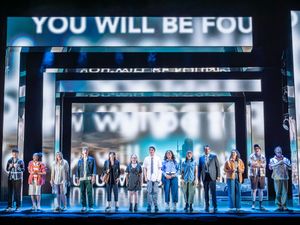'Nothing is necessarily as it seems': The patchwork puzzle of Catherine of Aragon's former home
It is a patchwork of history contained in one 16th century building, and it could soon be open to the public once more.
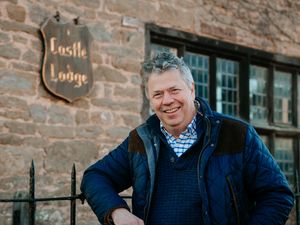
Walking through the doors of Castle Lodge in the heart of Ludlow is like stepping back in time, with wood panelling on every wall, extravagant fireplaces and intricate stained glass windows tinting the light.
It was revealed last month that new owner Ben Tagg is in the final stages of drawing up plans to turn the building - which was once the residence of Catherine of Aragon - into a boutique hotel, and has enlisted a conservation architect and historian to dig up its past.
It was always going to be a big undertaking, with 800 years of history to uncover within its walls, but challenges have been thrown up at every turn.
Speaking in the entrance hall of the grand Grade II-listed house, Ben explained: “One of our biggest tasks is trying to figure out what’s original and what’s been taken from elsewhere.”
That is because many of the historic features of the rooms - from the paneling and right up to the ceilings - originated elsewhere.

“This is fascinating,” said conservation architect Patrick McIlroy, who compiled a 115-page report on the building for Historic England.
“Nothing is necessarily as it seems. You can be in a room and feel like you are in a 15th century room, but you may actually be in a 15th century room that existed in another building.”
The ceiling of one of the downstairs reception rooms originated from Moreton Paddox in Warwickshire, and was taken down when the building was demolished, to be re-assembled at Castle Lodge.
“The owner of this building bought a lot of things and brought them into this building,” said Patrick.
“Sometimes you can tell but sometimes you can’t.
“That is part of the fun of it.

“There is a principle in conservation called phased development. For example you have Georgian, Edwardian, Victorian, and they all have very different styles of building.
“This building almost has its own phased development, from the 1960s and 70s, when the owner was buying things and bringing them in.
“The guy who did all this was very clever and quite knowledgeable, which makes it more difficult to tell fake from fact.
“I have identified at least five major houses from which bits have been taken or copied.
“The amount of things that have come from other buildings has been the most surprising part of the process so far.
“You expect things like pictures to come in, you don’t expect things like ceilings and stain glass windows.”
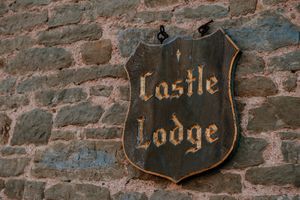
Patrick explained that this was because when large stately homes were re-purposed during the Second World War and their residents moved out into their second homes, they often chose not to return afterwards.
It meant the buildings were left to deteriorate, ‘accidentally’ burnt down or demolished.
“If the owner at the time hadn’t done what he did then all these things would have been lost,” said Ben.
Patrick added: “At that time conservation wasn’t what it is now, so these buildings and what was in them were lost forever.”
Patrick’s findings have been supported by extensive research carried out by historian Sarah Greenwood, who has been tasked with finding records, designs and photos that back up his theories of where different parts of the house originate from.
Other problems have arisen with the discovery of a chimney left with nowhere to go when the second floor extension was built above it, and the weight of walls and fireplaces built on top of open ceilings.
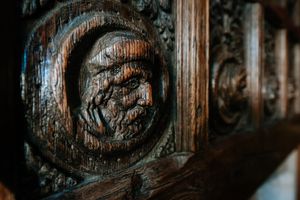
In one of the upstairs rooms, Patrick lifted the floorboard to show the more modern fibre board underneath. He said: “The ceiling downstairs at some point has completely collapsed and been re-built.
“This fibre board was used from the 1950s onwards, so we now know that they replaced the ceiling in the main entrance room.
“In the process they thought they had sorted out the old structural problems but they haven’t.
“We will have to find ways of reinforcing the timber beams, probably steel.”
Repurposing the lodge will present its own challenges, but Ben and Patrick have received positive feedback from Historic England and county conservationists, who have acknowledged it is in everyone’s best interests for the building to be brought back into use.
“Everything we want to do has to be justified,” said Patrick.
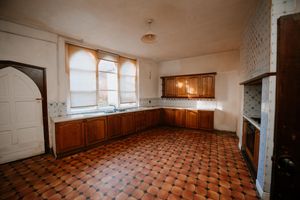
“For example, we can’t put any drainage down the front of the building.”
Ben bought the building last summer “on a whim” with a vision to transform it into a 12-bedroom hotel, with themed rooms inspired by some of its many residents, from Catherine of Aragon herself, to MPs, and even a 14th-century shoemaker who once lived there.
It is hoped that the plans will be submitted to Shropshire Council in the coming weeks with a view to starting work as soon as possible if they are approved. Ben hopes the hotel could be open by this time next year.
He added: “We are not taking anything for granted, this is all subject to permissions.”
Dating back to the 13th century, Castle Lodge was largely rebuilt in 1580. Privately owned throughout its history, the lodge was a hotel up until the Second World War. Most recently it was a private home, which the previous owner opened to the public as a museum.



